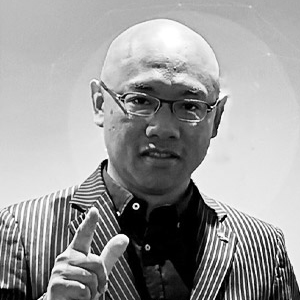- Technology
- SEE MORE
- classical
- general
- talk
- News
- Family
- Bürgerfunk
- pop
- Islam
- soul
- jazz
- Comedy
- humor
- wissenschaft
- opera
- baroque
- gesellschaft
- theater
- Local
- alternative
- electro
- rock
- rap
- lifestyle
- Music
- como
- RNE
- ballads
- greek
- Buddhism
- deportes
- christian
- piano
- djs
- Dance
- dutch
- flamenco
- social
- hope
- christian rock
- academia
- afrique
- Business
- musique
- ελληνική-μουσική
- religion
- World radio
- Zarzuela
- travel
- World
- NFL
- media
- Art
- public
- Sports
- Gospel
- st.
- baptist
- Leisure
- Kids & Family
- musical
- club
- Culture
- Health & Fitness
- True Crime
- Fiction
- children
- Society & Culture
- TV & Film
- gold
- kunst
- música
- gay
- Natural
- a
- francais
- bach
- economics
- kultur
- evangelical
- tech
- Opinion
- Government
- gaming
- College
- technik
- History
- Jesus
- Health
- movies
- radio
- services
- Church
- podcast
- Education
- international
- Transportation
- Other
- kids
- podcasts
- philadelphia
- Noticias
- love
- sport
- Salud
- film
- and
- 4chan
- Disco
- Stories
- fashion
- Arts
- interviews
- hardstyle
- entertainment
- humour
- medieval
- literature
- alma
- Cultura
- video
- TV
- Science
- en
Honey, I Shrunk the XR, with MEL Sciences Kai Liang

Chemistry is a tough subject. You\ncould memorize the periodic table left and right, but it can still be\nhard to actually picture what\u2019s going on at the microscopic level\nwhen atoms collide. Director of Business Development for MEL Science,\nKai Liang, says that\u2019s the beauty of their VR chemistry kits \u2013 it\nbrings the learner down to the atomic scale to see it for themselves.\n\n\n\n\n\n\n\nAlan: Welcome to the XR for Business Podcast with your host, Alan Smithson. Today\u2019s guest is Kai Liang. He is an amazing global world-trotter, travelling around the world promoting virtual and augmented reality for education. He\u2019s a deep expert and practitioner of VR and AR education and industrial solutions in the global marketplace. He\u2019s currently the acting director in a number of different companies, including world-class VR education content company MEL Science as their director of business development, leading VR education company Smart Stone Technologies, and the co-founder and VP of a leading Chinese VR education company, Growlib Technologies. He was recently appointed to the European Managing Director of Shadow Creator, a leading Chinese AR glasses and solution company based in Shanghai. Kai\u2019s various businesses are responsible for successfully deploying VR education classroom solutions to thousands of schools in many countries all over the world. And soon, solutions in several countries directly with the ministries of education. You can visit melscience.com for more information. \n\n\n\nKai, welcome to the show.\n\n\n\nKai: Well, many thanks, Alan.\nThat\u2019s a fantastic intro. Very kind of you.\n\n\n\nAlan: Oh, it\u2019s my pleasure. I\u2019m\nreally excited to have you on the show. How did you get into VR?\n\n\n\nKai: Well, I think it\u2019s really a part of the trend. I used to leave the marketing for glasses-free 3D technology. I was the VP for Dimenco. Glasses-free 3D \u2014 or otherwise called auto-stereoscopic 3D technology \u2014 has a lot of promise, has a lot of potential, but unfortunately, due to a number of factors, the business didn\u2019t take off. The industry kind of slowly drifted, and a lot of my friends and partners actually moved into virtual reality. And I can\u2019t help but notice that the difference from auto-stereoscopic 3D, VR was a technology and an ecosystem that is joined by a lot of leading global brands such as Facebook, Google, Microsoft, and Huawei, etc. etc. So business is growing stronger and stronger. And I can clearly see that it offer a stronger impact to user, as a media forum than auto-stereoscopic 3D. So yeah, that\u2019s how I just naturally fit in, my credits from 3D to VR. And education is really the area that I initially settled on to. I find that lot of possibility and their missed potentials. I believe this can add a lot of value to what we do.\n\n\n\nAlan: Well, I think you guys have already started to add an enormous amount of value to the education system. You sent me a license to your MEL Science VR application. The very first lesson was the difference between pencil lead or \u2014 carbon in a pencil lead \u2014 and carbon in a diamond. And I was able to \u2014 in VR \u2014 go in to at the molecular level, and see why carbon as a substrate like lead \u2014 or not lead, but graphite \u2014 is different fundamentally than how a diamond is. One is organized in sheets and the other one is organized in a structure that is much, much stronger. Obviously, diamonds are much stronger than graphite, but they\u2019re the same materials. And unless I had gone into that VR experience and gone down to the molecular level, I would never, ever really fully understand how that works. This kind of virtual reality experiences to explain phenomenon that are really difficult to grasp from a two-dimensional level. This is really, reall